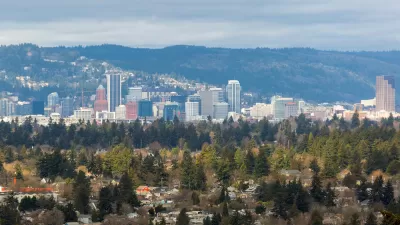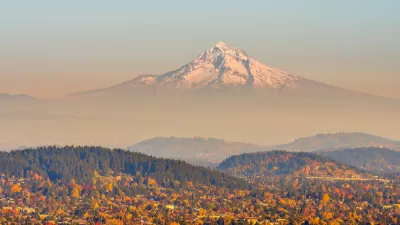A study of two cities at opposite ends of the urban spectrum demonstrate how density matters for a number of ecological services.

Rio de Janeiro is a tightly-packed city with large tracts of natural land surrounding it. Portland, Oregon intersperses many small parks throughout a sprawling urban landscape. A new study by a team of biology researchers finds that the Rio model sustains better natural services, including cleaning water and air, reducing noise, pest control, agriculture, carbon storage, and pollination. Denser cities with large adjoining parks also do a better job of mitigating the "heat island effect," a local temperature increase caused by the concentration of heat-absorbing metal and concrete.
The study finds, however, that less-dense cities with many small parks offer residents a better sense of well-being. As previously reported, there is evidence that walking in a natural setting is more beneficial to mental health than walking in an urban setting. Thus, "policymakers can improve dense cities' healthfulness, the researchers write, by adding some greenery in the form of sidewalk trees, green walls, and green roofs," Francie Diep writes.
Furthermore, Diep reports, "Moderate levels of development, like that of the suburbs, made natural lands lose their services at a disproportionately fast rate, compared to intense development."
FULL STORY: Why Denser Cities Are Better for People and the Environment

Alabama: Trump Terminates Settlements for Black Communities Harmed By Raw Sewage
Trump deemed the landmark civil rights agreement “illegal DEI and environmental justice policy.”

Planetizen Federal Action Tracker
A weekly monitor of how Trump’s orders and actions are impacting planners and planning in America.

The 120 Year Old Tiny Home Villages That Sheltered San Francisco’s Earthquake Refugees
More than a century ago, San Francisco mobilized to house thousands of residents displaced by the 1906 earthquake. Could their strategy offer a model for the present?

Indy Neighborhood Group Builds Temporary Multi-Use Path
Community members, aided in part by funding from the city, repurposed a vehicle lane to create a protected bike and pedestrian path for the summer season.

Congestion Pricing Drops Holland Tunnel Delays by 65 Percent
New York City’s contentious tolling program has yielded improved traffic and roughly $100 million in revenue for the MTA.

In Both Crashes and Crime, Public Transportation is Far Safer than Driving
Contrary to popular assumptions, public transportation has far lower crash and crime rates than automobile travel. For safer communities, improve and encourage transit travel.
Urban Design for Planners 1: Software Tools
This six-course series explores essential urban design concepts using open source software and equips planners with the tools they need to participate fully in the urban design process.
Planning for Universal Design
Learn the tools for implementing Universal Design in planning regulations.
Clanton & Associates, Inc.
Jessamine County Fiscal Court
Institute for Housing and Urban Development Studies (IHS)
City of Grandview
Harvard GSD Executive Education
Toledo-Lucas County Plan Commissions
Salt Lake City
NYU Wagner Graduate School of Public Service





























